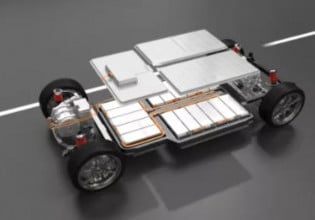Most of the companies getting a jump on "the next big thing" in power management are not well-known in the power supply industry. Many are start-up companies, and many are based in Europe. With potential unit sales in the billions, however, these companies have targeted the low-power sensor and device market. They are highlighted in the latest report in the Energy Harvesting, Microbattery and Power Management ICs series: "Competitive Environment." This 62-page report discusses the activities of low-profile companies poised to have a big impact in the power supply field.
Each of these markets is different, with different characteristics defining them and driving them. The energy harvesting companies are, for the most part, small start-up companies. Many are in Europe, like EnOcean, Ubiwave and Perpetuum. Companies like Powercast and Perpetuum have commercial products, while others are still in the prototype stage. The companies offering piezoceramic materials, such as The FACE Companies, are more established, with energy harvesting only one of the industries they supply to.
"Like most emerging technologies, the energy harvesting landscape has many specialized competitors," observed the report’s author, Linnea Brush, Senior Analyst with Darnell Group. "The profiles in this report cannot cover them all, but it does provide a detailed review of the more significant products and technologies."
Many of the energy harvesting companies have found it useful to partner with IC companies. IDS Microchip has a near field communications solution they did for Texas Instruments, for example. EnOcean is working with the Fraunhofer Institute. Perpetuum is working with Dust Networks. Many of these companies are members of the ZigBee Alliance, as well. The IEEE 802.15.4 standard (ZigBee) is now expected to co-exist with other standards such as Z-Wave, Insteon, LonTalk and others. As a result, products are becoming quot;ZigBee-qualified." Still, some companies believe that ZigBee will follow Bluetooth’s path in that it will need to find its own "application niche."
What is agreed upon is that wireless technologies are "hot" – customers want them and find wireless cheaper. Customers also want low power and high reliability. Where demand differences manifest is the area of batteries. Some customers want batteries and some do not. In general, the power requirements of batteries need to be minimized, and both established companies and start-ups are trying to meet this need. EaglePicher, Tadiran and Varta, for example, are capitalizing on their existing lithium technologies to offer microbatteries for energy harvesting applications. Front Edge, Oak Ridge Micro-Energy and Solicore are newer companies offering ultra-thin film batteries. Although many energy harvesting solutions (such as microgenerators) are aimed at "getting rid of batteries," they are still likely to be used in many wireless sensor networks.
The most established companies offering wireless sensor network and energy harvesting solutions are the power management IC companies such as Texas Instruments, Nordic Semiconductor, and STMicroelectronics. These manufacturers and others have a variety of products targeted at ultra-low-power applications. Some, like Advanced Linear Devices, have specific modules for energy harvesting. These products are expected to help drive down costs, since high volumes are necessary to achieve market penetration. Radiocrafts, for instance, is "aiming for high-volume manufacturing." Most companies see commercial adoption of ZigBee products and related energy harvesting solutions in two to three years.






